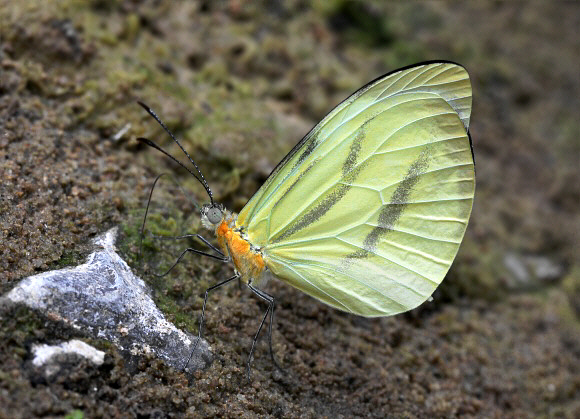
Introduction
The Dismorphiinae are a small subfamily of dainty “whites” that include the Wood Whites of Europe, and about 50 neotropical species. Features common to all Dismorphiine genera include the tapered and down-curved antennae, long thin abdomens, elongated forewings, and over-sized hindwings.
In some Dismorphiine genera such as Dismorphia sexual dimorphism is very pronounced, with females looking like fairly typical Pierids, while the males are often patterned in orange and black, closely resembling the “tiger complex” Ithomiines. In Enantia sexual dimorphism is less pronounced – the females are paler and less heavily marked than males, but otherwise quite similar.
Enantia comprises of 9 species, 4 of which ( mazai, lina, jethys and albania ) reach as far north as Mexico, while the remainder are restricted to various parts of South America. The ground colour on the upperside varies according to species, from pure white to yellow or orange. The apex and outer margins are black, but the markings vary in width and shape from species to species.
The underside colour of all species is quite variable. Distinguishing the species requires examination of the upperside apical markings, and the pattern on the underside. In mazai for example the latter has pale brownish blotches while in melite, lina, citrinella and limnorina there are greyish bars which vary in curvature according to species.
Enantia lina occurs from Mexico to Bolivia and Uruguay. There are 11 named subspecies.
Habitats
This species is found in forested habitats at altitudes between about 400-1500m. It is usually seen in mildly disturbed areas such as roadsides and riverbanks.
Lifecycle
The early stages are unknown.
Adult behaviour
Males are usually encountered among aggregations of mud-puddling butterflies, and are strongly attracted to urine-tainted sand. They always keep their wings closed while feeding, and often adopt a forward-canted position.
